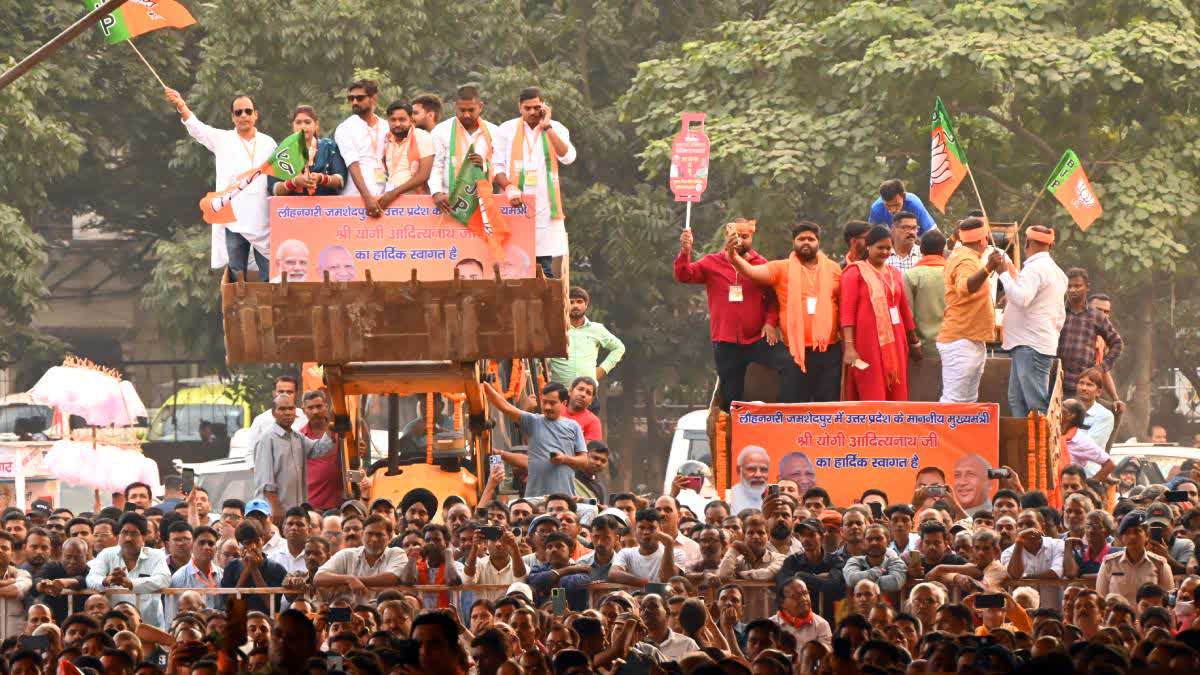Ranchi: The tribal state of Jharkhand, carved out of Bihar in 2000, has nature's bounty with pristine lakes, mountains, forests and a large swathe of untapped minerals. But the state has been mired for decades in political instability which thwarted its development.
For nine years from March 2, 2005, to December 25, 2014, Jharkhand was synonymous with rampant corruption and loot. This phase has been witness to seven chief ministers and three Presidential rules. The hankering after power made Madhu Koda, an independent MLA, grab the chief ministerial chair.
The birth and the churnings
Jharkhand emerged on the Indian map as the 28th state on November 15, 2000, on the initiative of then Prime Minister Atal Bihari Vajpayee with the BJP government led by Babulal Marandi. However, in a turn of fate, Marandi had to step down after a controversy over his domicile status surfaced, leaving the place for the young Turk Arjun Munda who completed a full term. But the political stability started eclipsing from here.
The 2005 election results threw up the politics of alliance as BJP, despite clinching 30 seats, had to sweat it out to rally 11 MLAs to claim a stake to form the government. Congress got 9, NCP 1, JDU 6, JMM 17, RJD 7, AIFB 2, CPI(ML) 1, UGDP 2, AJSU 2, JKP 1 and independents 3 seats, which fuelled ambitions among the parties.
JMM supremo and the architect of the Jharkhand movement Shibu Soren took advantage of this situation by becoming the CM. It was a pyrrhic victory for the tribal leader as he could adorn the chair for 10 days handing over the mantle to Munda who could reign for a year and six months as Congress played the spoilsport by making Koda the CM with JMM's support.
An era of scams and central rule
Koda was CM from September 19, 2006, to August 27, 2008, during which many scams surfaced, compelling the JMM to dispose of him and make Soren CM. It was just for 23 days Soren continued before the President's Rule was imposed for the first time on January 19, 2009. Several strides were made during this exceptional phase to form a government but skewed equations marred all efforts.
Poll pundits forecast a hung assembly for the 2009 assembly elections, which turned out to be true after no party secured an absolute majority in the House. BJP was reduced to 18 and JMM equalled it by winning an additional seat from the previous elections. Marandi, who broke away from the saffron party, floated JVM which won 11 seats to become the fourth-largest party. In the imbroglio, the BJP supported Soren to form a government which lasted five months.
The ensuing political upheaval attracted a three-month President's Rule for the second time followed by Munda becoming the CM with JMM's backing. He continued for two and a half years after JMM withdrew its support, leading to the imposition of the Central Rule for the third time which lasted nearly six months.
A Soren scion enters the stage
Finally, with the support of Congress, Shibu Soren's political heir, Hemant Soren, became the CM on July 13, 2013, till the formation of the new government on December 28, 2014.
Between 2005 and 2014, before the formation of the fourth assembly, political instability prevailed in Jharkhand. The election results of 2014 proved auspicious although no party got an absolute majority. The defection of six JVM MLAs helped the BJP garner an absolute majority. This was the period when Jharkhand found its first non-tribal chief minister in Raghubar Das who completed a full term.
BJP, which ruled for five years, was confident of returning to power again. But Das could not retain the Jamshedpur East seat and BJP was reduced to 25 seats. With 30 seats, JMM emerged as the largest party and Hemant Soren was crowned. Soren was incarcerated for five months following his arrest by ED on January 31, 2024, in connection with a land scam. In the interregnum, JMM's trusted lieutenant Champai Soren was made the CM, only to be removed following the release of Hemant on bail.
A disheartened and dejected Champai joined the BJP and was fielded from Sarikela. There is a possibility of a head-on battle between the NDA and INDIA alliances where Jairam Mahto, who has emerged as a Kurmi leader, is trying to make the contest triangular by floating the JLKM party.
Also Read:



